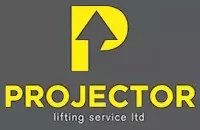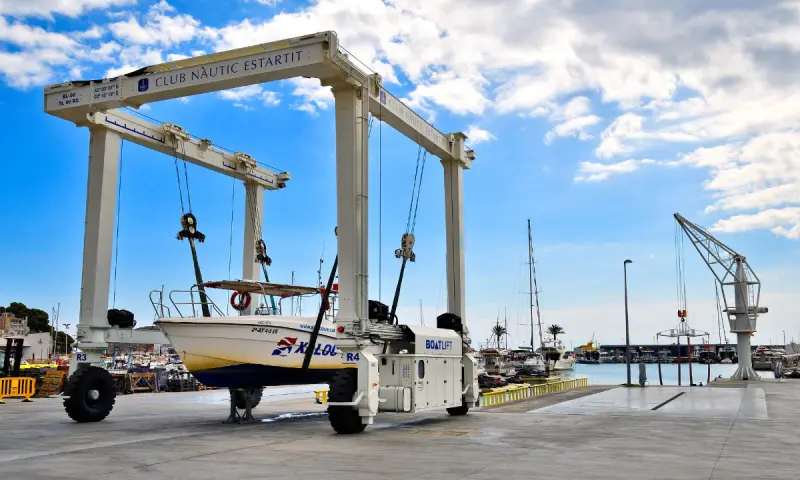Have you been wondering: how are boats lifted? This article looks at how a boat lift works and the types of boat lifts to choose from.
How Does A Boat Lift Work?
Boat lift systems are what keep your boats or flotation tanks safely and successfully hoisted above the waterline with several locks when it's not in use.
Such is usually helpful for preventing corrosion from water damage, organism growth, and other issues associated with too much exposure to saltwater levels. Besides, boat owners will find that cleaning the vessel and its hull is far more accessible when expertly raised onto a platform allowing it to stay sturdy.
There are a whole host of boat lift types, and each operates similarly, with a few vital differences.
A watercraft will rest on bunk boards attached to cradles. Your constructed boat lift system is motorised, making it easy for users to lift and lower the cradle by pressing a button, which is great for maintaining the appearance and efficiency of your boat during a service. Taking your boats out onto the water with a boating lift is incredibly straightforward as you can lower the cradle until your vessel is freely floating in the water.
When returning to the dock after a trip out, you then position your boat over its bunk boards, raising the cradle till your boat or vessel is above its waterline, whether in rivers, canals, shores, docking or lakes.
You can find available boat lifts across the UK markets to accommodate all kinds of ships, boats and vessels.
One example of their purposes is that they can use to lift a range of watercraft, including catamarans, pontoon boats and many more. Numerous configurations are created to suit various environments; for example, most lifts are installed using pilings, yet elevator lifts are usually attached to the seawall and cannot utilise pilings to complete installations.
Types Of Boat Lifts
Several types of boat lifts are available throughout the UK; whilst many have different designs, shapes and sizes, plenty cover the same lifting and lowering tasks, allowing you to save money. These types include the following:
Freestanding boat lifts
These are lifts that, when installed, are directly mounted into the ground beside docks and underneath the water. Such a lift provides a base, which is helpful so that no other structures need to be involved in allowing it to work and be sturdy.
You may place these boat lifts into the water; alternatively, installers can build them onto the land. They are suitable for many areas across a shipyard or dock.
Boathouse lifts
This is a form of overhead lift usually built into the boat or homeowner's docks, making it a fantastic substitute for those that don't have the facilities or space in the water to place a freestanding lift.
Boathouse lifts don't have to be built directly into a dock's boathouse; Installers can successfully build these vertical lift systems into a garage, near trailers or inside a business warehouse.
Pile mount lifts
These lifts are, as the name suggests, mounted onto a dock piling. A pile is typically a large wooden post installed into the ground around the docks with concrete to ensure they stay stable and sturdy enough to withstand strong tidal forces.
Floating boat lifts
Floating dock lifts are docks where you can successfully drive your boat upwards on an inclined plane to keep your vessel or boat out of the water without investing money in a time-consuming pulley system or other contraptions that could lead to passengers slipping.
Typically, these don't require as much maintenance as other boat lift systems because they share fewer moving parts. However, we recommend being wary of the marine growth they can get covered in.
How to Use a Boat Lift

Professionals and boar owners use boat lifts to launch vessels and ships in and out of the water successfully.
Boat lifts typically use motorised or hydraulic lifting systems, known for raising and lowering your boats safely and conveniently into the water for a faster and more straightforward job.
Many of these boat lift systems work similarly; therefore, you never have to worry about not knowing how to operate your model, its controls and cables so they can cover numerous applications and works.
However, many of these can be designed to fit specific requirements, so we highly recommend thoroughly reading all instructional manuals and material provided for you.
It may also be wise to contact the manufacturers or installers, who can provide you with all the essential details on your type of boat lift and the proper operations. Proper operations are essential for protecting your employees and the equipment.
What is a Boat Gantry Crane?
All boat gantry cranes, also known as boat or travel lifts and boat hoists, are non-standard lifting boat equipment. They are typically offered with bespoke designs that will suit different clients' needs and requirements to accommodate vessels and ships of various sizes and shapes.
These gantry cranes are mounted on top of rubber tires, allowing them immense mobility for efficient use. Another form of boat gantry crane is the mobile boat crane equipped with its own self-supporting steering system to enhance and increase the level of manoeuvrability.
Boat gantry cranes across the UK can be built to be utterly functional according to the circumstances to ensure you achieve maximum efficiency when on-site or at shipyards. Regardless of the situation, fully operating systems are fantastic for the boat handling process as they ensure security and reliability.
Functions of Mobile Boat Crane
A boat gantry crane is typically used to lower, lift and handle ships and boats in shipyards, commercial yards and marinas.
They perform numerous functions to suit any construction or workplace operation, for example, lifting in and out of areas and types of transportation work. Specifically, it is more so used to lift both large and small boats in and out of the water for regular maintenance or repairs in the yard.
Such forms of equipment are most suitable for newly built ships and launching them into the water.
The boat lift crane can successfully transport vessels and ships from one location to another, skillfully arranging them into a neat and practical row to enhance the usage of the limited space in each shipyard.
Boat gantry cranes are also a vital powered tool for those professionals whose primary job is vessel handling.
They are known for providing excellent safety and reliability for all tasks. Such cranes are often built with a varying capacity range of 1200 tons.
Plenty of boat cranes across the UK are purposefully built and designed to suit the various requirements of marine and shipyard customers to suit and fit the differing vessel configurations available across the market.
For further information, we highly recommend contacting overhead crane and lifting equipment manufacturers so that you can discuss your personal or company's needs more precisely.
For example, you may require a specific type or size of crane to suit the shape of the shipyard you work at.

Are you planning to a boat inspection in the UK? If you need to lift a boat or other heavy objects and machinery, we offer lifting equipment and lifting services for the construction and industrial industries.
Follow the links below to find out more about our specialist lifting services throughout the UK.

